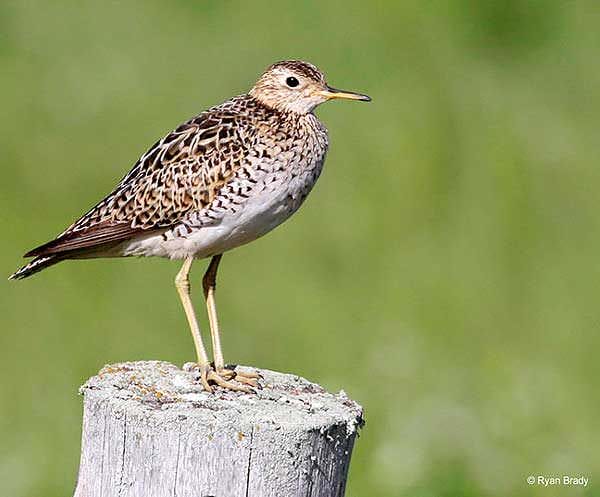A shorebird that lives in grasslands? Meet the Upland Sandpiper!


Wisconsin -(Ammoland.com)- In 1916, the United States and Canada signed the Migratory Bird Treaty to protect birds across state and national borders.
To celebrate 100 years of bird conservation, each month Wisconsin DNR will feature a native Wisconsin bird species that has benefited from the protection and cooperative conservation set forth in the Migratory Bird Treaty. For more information on the Migratory Bird Treaty Centennial and other Birds of the Month, visit dnr.wi.gov, keyword “bird treaty.”
Common throughout much of the United States in the early 1800s, extensive market and sport hunting, along with habitat loss, led to a steep decline in populations of the Upland Sandpiper by the middle of the 20th century. While implementation of the Migratory Bird Treaty Act eventually curbed hunting pressure, loss and degradation of breeding habitat continues to adversely impact this grassland specialist.
This bird requires large blocks of upland grassland and barrens habitat and is thus sensitive to habitat fragmentation.
Fortunately, certain public lands in Wisconsin, such as Buena Vista and Crex Meadows wildlife areas, offer suitable habitat of appropriate size (blocks of at least 100 hectares).
On private lands, large pastures are favored haunts where these persist, although early-season mowing/haying remains a major threat to nest success and population growth.
- This species was recently listed as Threatened in Wisconsin. Like many grassland birds, it is in steep decline.
- Despite its classification as a “shorebird,” this species prefers large tracts of relatively shortgrass upland habitat and mainly consumes insects.
- During courtship, males and females call with a long “wolf” whistle. This behavior is more common among males, especially when nesting begins.
- This species is a true long-distance migrant, wintering in the grasslands of Brazil, Argentina, Bolivia and Paraguay.
- Results from the first year of Wisconsin Breeding Bird Atlas II (http://wsobirds.org/atlas) already indicate declines from the first atlas conducted 20 years ago, most notably in the eastern Wisconsin corridor from Lake Winnebago to Door County where agriculture now dominates.
